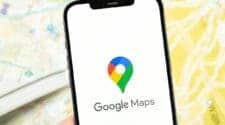Google Maps is launching an exciting new feature in Paris this summer, utilizing augmented reality (AR) to let users explore the city’s rich history and iconic landmarks in a whole new way.
A Journey Through Time with Google Maps
Paris, renowned for its historical landmarks and museums, now offers an immersive experience through Google Maps. Using AR technology, visitors and locals can visually travel back in time to witness the historical evolution of the city and its famous sites.
Key Features of the AR Experience
1. Historical Reconstructions:
– Eiffel Tower: See an alternate version of the Eiffel Tower that was conceptualized for the 1900 World Expo.
– Seine Pavilions: View the pavilions constructed along the Seine River for the same fair.
– Notre Dame Cathedral: Experience recreations of Notre-Dame and other parts of Paris from the 1700s.
2. Interactive Exploration:
– When searching for a landmark in Google Maps that offers AR content, users can tap the “AR Experience” icon and raise their device to view the historical AR scene through the Lens in Maps.
– Even if you’re not physically at the landmark, you can access the AR experience from anywhere globally using Street View.
3. Collaborative Creation:
– This AR feature is part of Google Arts & Culture and was developed in collaboration with Ubisoft, promising more content and experiences in the future.
How to Use the AR Feature
– Step 1: Open Google Maps and search for a participating location.
Step 2: Tap the “AR Experience” icon.
3: Raise your device and use the Lens in Maps to view the AR content.
– Alternative Viewing: Access the experience remotely through Street View for a global perspective.
Expanding the AR Experience
Google has announced that this feature will continue to expand over time, incorporating more landmarks and historical events. This initiative aims to enrich cultural understanding and provide an engaging way to learn about Paris’s history.
The Significance of AR in Maps
This innovative use of AR in Google Maps enhances the travel experience by combining digital technology with historical education. It’s a modern twist on exploring the past, making history accessible and interactive. By partnering with Ubisoft and integrating with Google Arts & Culture, Google ensures that the content is both accurate and captivating.
As Google plans to expand this feature, we can expect similar AR experiences in other historically rich cities worldwide. This could revolutionize how we interact with cultural heritage and historical sites, offering a blend of education, entertainment, and technology.
Conclusion
The new AR feature in Google Maps is set to transform how we explore and understand the history of Paris. By providing a virtual time-travel experience, it adds a dynamic layer to the city’s already vibrant cultural tapestry. Whether you’re a local, a tourist, or an armchair traveler, this feature promises to deliver a unique and immersive historical journey.
This summer, if you’re in Paris, don’t miss the chance to use Google Maps’ AR feature to step back in time and witness the city’s iconic landmarks as they once were. And for those who can’t make it to Paris, enjoy this remarkable experience from the comfort of your home via Street View. This is just the beginning of a new era in digital exploration and historical education.





